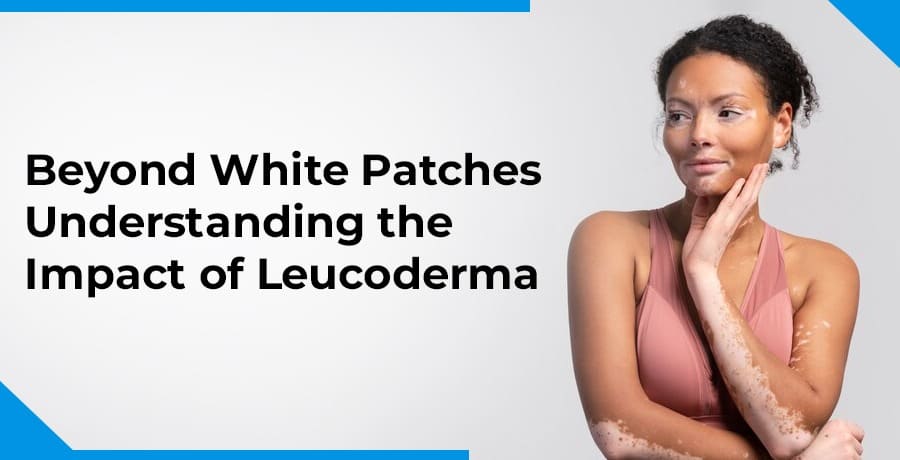
Have you ever noticed someone with patches of white skin that stand out against their natural skin tone? This condition, called vitiligo or Leucoderma, affects about 0.5 to 2% of people worldwide, regardless of race, gender, or ethnicity. It's characterized by a loss of skin pigment, causing white spots or patches to appear on the skin's surface.
While the exact causes of vitiligo remain elusive, there are several factors of Leucoderma as follows:
Genetics: A family history of vitiligo can increase a person's susceptibility to developing the condition.
Autoimmune Disorders: Individuals with other autoimmune disorders, such as Type 1 diabetes or thyroid disease, are at a higher risk of developing Leucoderma.
Environmental Factors: Certain environmental triggers, such as severe sunburn or exposure to certain chemicals, may trigger vitiligo in some individuals.
Stress: While not a direct cause, stress can worsen and influence the condition's progression.
White patches on the skin are the most distinctive aspect of vitiligo. These patches can be in various sizes and are more visible in places regularly exposed to sunlight, such as the face, hands, and feet. Leucoderma is diagnosed mostly by a careful visual examination.
Treatment Options:
Some commonly used treatment approaches include:
Topical agents: Creams and ointments containing corticosteroids or calcineurin inhibitors can help slow down the progression of vitiligo and promote repigmentation in some cases.
Light therapy (Phototherapy): Exposing the affected skin to specific wavelengths of ultraviolet light can stimulate pigment production and repigmentation.
Depigmentation therapy: In cases where repigmentation is unlikely, treatments can even out the skin tone by removing the remaining pigment from unaffected areas.
Surgical: Procedures like skin grafting or melanocyte transplantation may be considered for small areas with stable vitiligo.
As a complex autoimmune condition requiring specialized care, seeking treatment from a qualified and experienced dermatologist is crucial. If you're looking for the best leucoderma Surgeon in Delhi. Dr. Anup Dhir, a renowned surgeon in Delhi, has dedicated his career to understanding and treating this complex condition.
With a deep understanding of vitiligo's intricacies and extensive experience managing diverse cases, Dr. Dhir offers personalized treatment plans tailored to each patient's unique needs.

